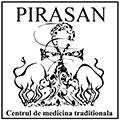Defined as a lateral deviation of the spinal column, scoliosis affects not only the structure of the spinal cord but also the functions of the nerve centers located at the level of the bone marrow, a reason for which the vertebral deviations have also neurological consequences. These nerve centers coordinate the activity of the organs in the body. The pressure exerted upon them will lead to a faulty function of the organs and consequently to metabolic disorders or even to associated chronic diseases. At cerebral level, there can be noticed a poor cerebral oxygenation, diminished concentration capacity; memory, sleep and psychic disorders etc.
The main causes that lead to scoliosis are an incorrect body posture assumed for a long time and sedentariness. The deviation also occurs where there is a predisposition of the body, such as a degeneration of the vertebral joints and ligaments as well as a weakening of the paravertebral muscles’ tone (hypotonia). In adults, scoliosis also occurs as a consequence of the aging process, especially where there is osteoporosis or osteoarthritis.
Infantile scoliosis accounts for the most frequent cases; the first symptoms appear around the age of 8-10. During puberty, when the process of growing becomes accelerated, the curves may become aggravated. The increased deformation raise the risk of torsioning one or several vertebrae and deforming the thorax, the abdomen and the paravertebral areas.Gibbosity or thorax deformation reduces the pulmonary capacity and causes overstraining of the cardiac muscle, therefore raising the risk of cardiac diseases.
When does the doctor recommend a specialty consultation?
Medical investigations are recommended when there is an asymmetry in the shoulders (a shoulders appears to be higher), C or S – shaped curves in the backbone; asymmetry in the hip (one hip is higher), when one shoulder blade is more prominent than the other one, and the head is not centered upon the middle axe of the body. At the same time, pain in the paravertebral muscles may be the manifestation of an early scoliosis.
A lot of people have backbone curves of less than 10 degrees. From the perspective of the traditional medicine, scoliosis must be treated properly, even where there is a deviation of less than 10 degrees, mainly because of the neurological obstructions and of the body dysfunctions that it causes. The deviations of over 30 degrees inclination require a medicinal corset, too. Where there are deformations of over 50 degrees, surgery is advisable.
Treatment
In the traditional medicine, the scoliosis treatment aims at the restoration of the natural vertebral route by acupunctureand Tibetan thermo-therapy techniques, osteo-articular manipulation, medicinal gymnastics and herbs products. The totality of therapies involved serve to eliminate the hypotonia (weakening of the paravertebral muscles’ tone), to reduce the inflammation and the contraction of the muscles and ligaments. The intervertebral ligaments are functionally and structurally restored if there are minor or medium lesions. The herb products contain active substances that work for the healing of the associated chronic diseases, but also for the recovery of the local tissues’ structure.

